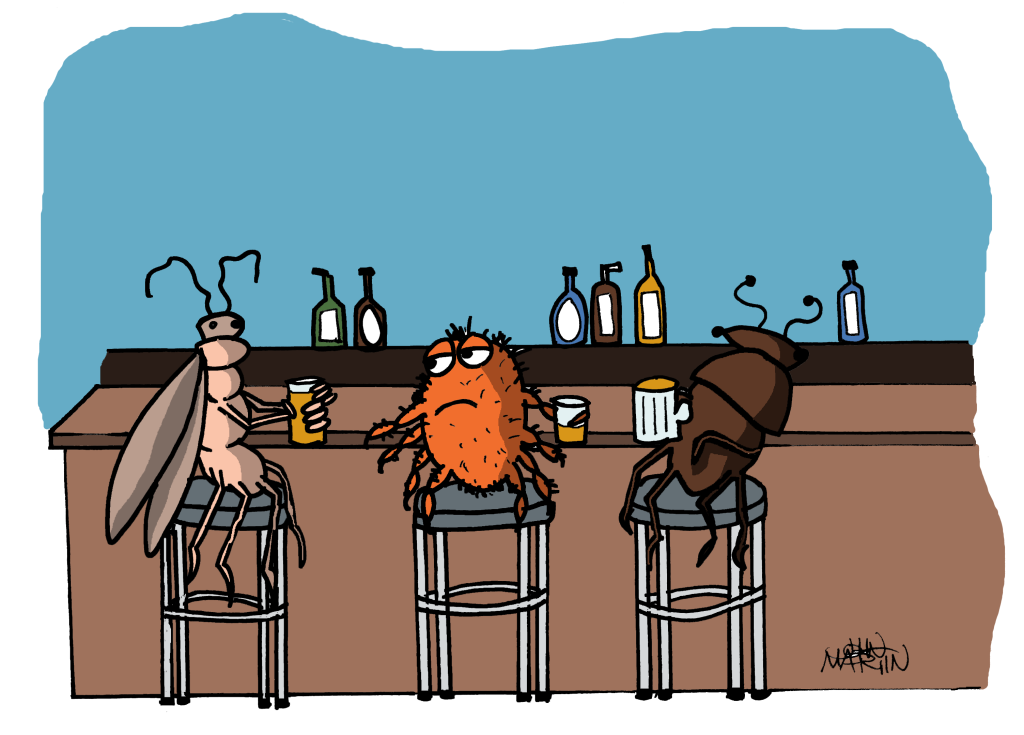Stephen Bishop
Earlier this year, the leadership of my local bee club unleashed me onto our newest crop of initiates. I’m proud to say I quickly winnowed the proverbial wheat from the chaff. In fact, only a few of those thirty-three bright and shining faces, who hours earlier were eager to learn the mysteries of the hive and do their own little part to help save the bees, withstood the thoroughness of my after-lunch presentation. The strongest of the bunch were able to hold their eyelids open for a good 45 minutes without yawning. The weakest quickly dropped into slumber five minutes in.
Alas, these days you have to teach to the test—and the test, in this case, was a multiple-choice examination of the human brain’s ability to memorize a bevy of beekeeping facts. But as we all know, beekeeping is more than rote memorization. It’s a journey into some of the deepest moral quandaries of human existence—for instance, when faced with an overzealous guard bee that is determined to implant its stinger in your forehead, is it better to swat and flail or to never have swatted at all? It’s conundrums like this that really encapsulate what it means to keep bees, so the sooner we start teaching the advanced problem solving needed to face such dilemmas, the better off our fledgling beekeepers will fare.
So, if any beginning beekeepers happen to be reading this and would like a true test of what it means to be a beekeeper, you can practice your problem-solving skills on the following questions.
Question 1: Ye Gads! A runaway grizzly bear is barreling toward your apiary. Because of your poor fence-building abilities, your electric fence is somehow cross wired and only has a enough voltage to protect one section of the apiary. In section one are fifteen hives—fifteen swarmy hives that have produced a pitiful pittance of honey. In section two are five hives—your crowning achievements, stacked high with honey supers. These five hives produce more honey than the other fifteen combined. Which section of fence do you electrify? Do you save the five or fifteen?
Question 2: At 1:30 P.M. on March 25th, you are required to attend a mandatory meeting at your soul-crushing workplace. However, at 1:10 P.M. on March 25th, you get a text message from your neighbor who informs you that one of your hives has swarmed. The swarm is currently hanging on a little cherry tree, about chest high, and is bigger than a July watermelon. What do you do?
Question 3: As an up-and-coming wealthy beekeeping bachelorette, you have attracted the attention of many suitors. However, two stand out from the crowd. One is charming and handsome, with an infectious smile that brightens even the darkest bee veil. The other is kind of annoying, though handsome enough, and comes from a wealthy family that owns large tracts of land, specifically forestland filled with gnarly old sourwood trees. You are currently trying to expand your beekeeping empire and need new apiary sites. Whose proposal do you accept?
Question 4: A varroa mite, wax moth and small hive beetle walk into a bar. You, as a barkeeper and owner of the establishment, have the power to treat them to a free round on the house. Do you treat? If so, what do you treat them with? What are the label requirements for said treatment? What are the repercussions for not treating?
If you answer one out of four questions correctly, you are likely a master beekeeper. If you answer all four correctly, you are wise beyond all comprehension and well on your way to founding a beekeeping cult.
Stephen Bishop is an enlightened beekeeper in Shelby, NC. You can read more of his humor writing at misfitfarmer.com or follow him on Twitter @themisfitfarmer.










